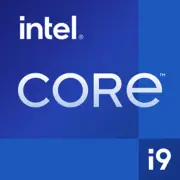Intel Core i9-10900X X-series

Intel Core i9-10900X X-series: Detailed Review of the 2020 Processor in the Realities of 2025
Relevant as of April 2025
Introduction
The Intel Core i9-10900X processor, released in 2019, still remains an interesting option for specific tasks. Despite its age, its 10 cores and 20 threads based on the Cascade Lake X architecture continue to attract users who need multi-threaded performance without transitioning to new platforms. In this article, we will explore who in 2025 should pay attention to this CPU and evaluate its strengths and weaknesses.
Key Specifications
Architecture and Process Technology
The Core i9-10900X is based on a 14nm process technology (codename — Cascade Lake X). This is Intel's last generation before transitioning to 10nm standards, which explains its high thermal output (TDP 165W). The architecture is optimized for workloads: support for AVX-512, Deep Learning Boost for accelerating AI tasks, and 48 PCIe 3.0 lanes.
Performance
- Geekbench 6: Single-Core — 1544, Multi-Core — 9021.
- Frequencies: Base — 3.7 GHz, turbo max — 4.5 GHz (Turbo Boost Max 3.0).
- Cache: 19.25 MB L3.
Key Features:
- Support for DDR4-2933 memory in quad-channel mode.
- Hyper-Threading and Optane Memory technologies.
- Unlocked multiplier for overclocking (requires powerful cooling).
Compatible Motherboards
Socket and Chipsets
The processor uses the LGA 2066 socket and is compatible only with the Intel X299 chipset. In 2025, finding new motherboards is challenging, but models can be found on the secondary market or in remaining stock:
- ASUS ROG Rampage VI Extreme (original price in 2020 — $600, currently — around $250-300 for new, if you can find one).
- MSI X299 PRO (original price — $300, currently — $150-200).
Selection Considerations:
1. Number of PCIe slots: important for builds with multiple GPUs or NVMe drives.
2. Support for USB 3.2 Gen2 and Wi-Fi 6: available on top-tier boards.
3. VRM cooling: critical for stability during overclocking.
Supported Memory Types
The i9-10900X works only with DDR4 (up to 256 GB, quad-channel mode).
- Recommended speeds: DDR4-2933 (officially) or overclocked modules up to 3200 MHz.
- For workstations: 64-128 GB (e.g., Kingston Fury Beast 128 GB kits).
- For gaming and multimedia: 32-64 GB (Corsair Vengeance LPX 3200 MHz).
Important: DDR5 and other modern standards are not supported.
Power Supply Recommendations
With a TDP of 165W and the VRM's power demands on the motherboard:
- Minimum: 650W (for a system with a single NVIDIA RTX 4070-level graphics card).
- Optimal: 750-850W (with headroom for overclocking and upgrades).
Examples:
- Corsair RM850x (80 Plus Gold, $140-160).
- EVGA SuperNOVA 750 G5 ($120-130).
Tip: Avoid cheap PSUs — voltage fluctuations can damage the CPU.
Pros and Cons of the Processor
Pros:
1. Multi-threaded performance: 20 threads are relevant for rendering, encoding, and virtualization.
2. Overclocking potential: With good cooling, up to 4.8 GHz on all cores can be achieved.
3. Compatibility with X299: Motherboards support multiple NVMe drives and SLI/CrossFire configurations.
Cons:
1. Power consumption: 165W leads to heating and high system noise levels.
2. Outdated process technology: 14nm compared to 5-7nm of Ryzen 7000/8000.
3. No PCIe 4.0/5.0: A limitation for modern SSDs and GPUs.
Use Scenarios
Work Tasks:
- 3D Rendering (Blender, Maya): 10 cores perform better than mid-range 8-core CPUs.
- Video Editing (Premiere Pro): Rendering is accelerated thanks to multi-threading.
- Virtualization: 20 threads allow running multiple VMs simultaneously.
Gaming:
- Performance: In Full HD (e.g., Cyberpunk 2077) — 90-120 FPS (with RTX 4070).
- Weak Points: In games dependent on IPC (e.g., CS2), it falls short compared to Ryzen 5 7600X.
Multimedia:
- Suitable for streaming (OBS + gaming) and photo editing (Lightroom).
Comparison with Competitors
AMD Ryzen 9 5900X (12 cores, 24 threads):
- Pros: Better energy efficiency (105W), PCIe 4.0, higher IPC.
- Cons: Difficult to find new in 2025 (price $300-400).
Intel Core i7-13700K (16 cores, 24 threads):
- Pros: Newer cores (Raptor Lake), supports DDR5.
- Cons: Requires a platform change (LGA 1700).
Conclusion: The i9-10900X only wins on price ($400-500 for new, if still available in stores) and for users already on X299.
Practical Assembly Tips
1. Cooling:
- Liquid cooling (NZXT Kraken X63) or a top-tier air cooler (Noctua NH-D15).
2. Case:
- With good ventilation (Lian Li Lancool III).
3. Memory:
- 4 DDR4 modules to activate quad-channel mode.
4. BIOS:
- Update to the latest version for stability.
Final Conclusion: Who Is the i9-10900X Suitable For in 2025?
This processor should be considered if:
- You already have an X299 motherboard and want an upgrade without changing platforms.
- You need multi-threading for work tasks, but have a limited budget.
- PCIe 4.0/5.0 and DDR5 are not critical.
Not recommended for:
- Gamers focused on FPS at 1080p resolution.
- Users who value energy efficiency and silent operation.
Conclusion
The Intel Core i9-10900X in 2025 is a niche solution. It falls short compared to new CPUs in single-threaded performance and efficiency but remains a working tool for professionals stuck on the X299 platform. Buying it new is only sensible with significant discounts (up to $400); otherwise, transitioning to AM5 or LGA 1700 is more advantageous.
Basic
CPU Specifications
Memory Specifications
Miscellaneous
Benchmarks
Compared to Other CPU
Share in social media
Or Link To Us
<a href="https://cputronic.com/en/cpu/intel-core-i9-10900x-x-series" target="_blank">Intel Core i9-10900X X-series</a>